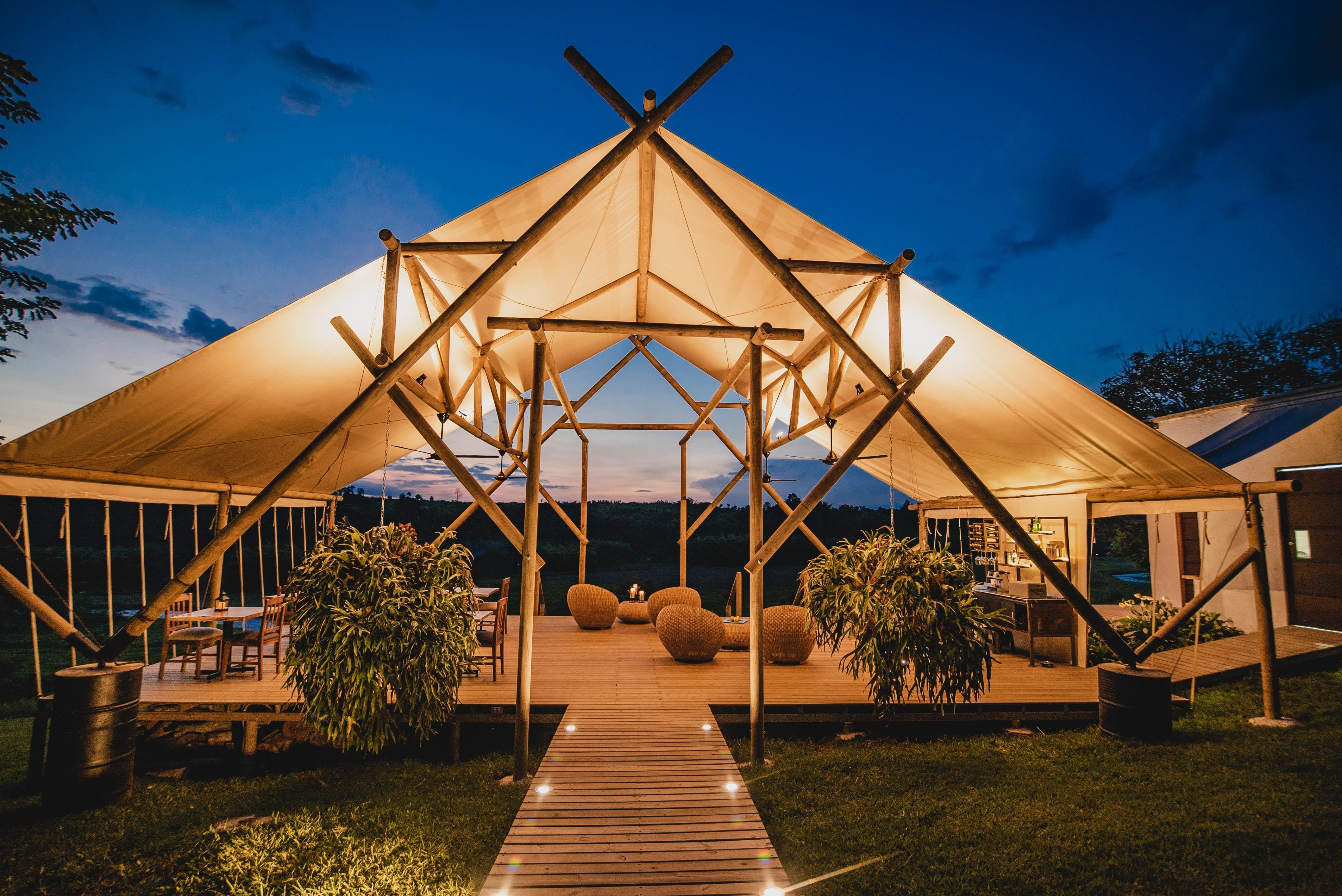Where To Go In 2024: 11 New Ideas For Responsible Travel
8 min read
Slow travel. Conscious travel. Regenerative travel. These are all terms that went from the fringes to the mainstream in recent years, as thoughtful tourists—and the travel agent, destination management specialists and tour operators who make their dreams come true—have started to consider the consequences for the places they visit.
While greenwashing is still all too common, others in the travel world are taking their impact seriously. Last month, Fodor’s released a new “no list” for 2024, and the UN’s World Tourism Organization is still hammering away at its Sustainable Development Goals.
And so, while now is the season for wish lists compiled by traditional luxury travel agents, aggregated data and even AI, I turned to small business owners—who often live in the destinations they’re selling—who care about principles as well as profits. Here’s what they suggest.
The Americas
Uruguay, Away From The Resorts
Cabo Polonio, Uruguay
Courtesy of Neverseen
“Uruguay is a uniquely stable country (politically, socially and environmentally) and a very low risk destination in such troubled times,” Elin Granberg states pragmatically. But the half-Uruguayan travel designer, the founder of Neverseen, didn’t just nominate her country of origin for its safety factor. “I’m very proud of crafting bespoke journeys to my small but mighty country, where regenerative practices have been a way of life for many generations. A culture rooted in simplicity and respect for nature, the country welcomes visitors to experience the genuine connection between land and life.”
Neverseen organizes bespoke stays in places like the family-run Posada Ayana in the artsy village of José Ignacio where “farm-to-table dining and biodynamic winemaking are a given, green architecture seamlessly blends with the landscape and handpicked restored vintage pieces from Montevideo.” Its James Turell Skyspace “feels right at home in a town where nature and conscious living sits at the center of everything.” Another Neverseen adventure includes horseback riding across the dunes to Cabo Polonio, a remote seaside village powered by wind and solar energy.
The Brazilian Amazon
A boat excursion in the Brazilian Amazon
Courtesy of Our Whole Village
More than 100 miles from Manaus, the Jaú National Park is the largest freshwater forest park in the world and a UNESCO World Heritage Site, and yet it is still relatively unexplored by tourism, says Patty Monahan, whose company, Our Whole Village, introduces some of those few tourists to the region. The family-focused travel agency’s five-day expedition takes in sailing on the Negro, Jaú and Carabinani Rivers, where “you’ll have the opportunity to explore the abundant wildlife and stunning scenery of this beautiful region while visiting riverside communities where you can learn about their way of life and make a positive impact,” she says. For parents and children, “this is a once-in-a-lifetime opportunity to explore the Amazon and make a difference in the local community.”
Colombia’s Coffee Region
Riding gear at a lodge in Colombia’s coffee region
Courtesy of WhereNext
Colombia’s Coffee Cultural Landscape is a UNESCO World Heritage Site and “a place where the warm embrace of the locals will guide you, and secrets shared in countless ways unfold in landscapes that ignite your imagination,” says Angelika Koehler, the general manager of WhereNext Travel, a Colombian company that’s dedicated to the idea that travel has the power to transform lives.
WhereNext’s itineraries include places La Carbonera, where guests take Jeep tours of colonial villages like Salento and Filandia and explore a wax palm forest that soars to heights of roughly 200 feet, a realm still largely unknown. Accommodation choices include the architecture-forward Bio Habitat Hotel, where the cabins blend seamlessly with nature, or the tented accommodations at Glamping Entre Rios and El Nido del Condor.
Panama, For The Birds
Tranquilo Bay
Courtesy of the hotel
Panama is roughly the size of South Carolina and is (at least seasonally) home to more than 1,000 recorded species of birds, which is more than are found in the United States and Canada combined, notes Renee H. Kimball, the chief steward of Tranquilo Bay Eco Adventure Lodge.
That lodge, along with Canopy Tower in eastern Panama, is offering an eight-day guided birding itinerary. It starts at the tower, where the observation deck is at eye level with the rainforest canopy and the first that nest in it, including toucans, parrots, tanager species and hawks. Then a short flight takes guests to Bocas del Toro and Tranquilo Bay on the country’s western Caribbean slope, where they will be serenaded by red-lored parrots, Montezuma oropendolas, and green ibis in flight.
Africa
Community-Supported Kenya
Workers feed baby elephants at a sanctuary in northern Kenya
Courtesy of Elevate Destinations
Elevate Destinations’ privately guided itineraries in northern Kenyan focus community-powered conservation initiatives and highlight the efforts of these conservancies to protect many endangered species. “Travelers have an insider opportunity to go behind the scenes and understand the challenges of poaching, climate change and economic pressures faced by a premier conservancy,” says Elevate Destinations founder Dominique Callimanopulos.
“In addition to experiencing breathtaking landscapes and extraordinary wildlife, travelers will have a chance to fly-camp [staying in a very remote mobile camp under the stars] in the northern frontier, track rhino on foot, visit with the Samburu women who manage the Reteti Elephant Sanctuary and speak with Samburu warriors about the issues they face as they continue to embrace a pastoralist way of life.”
Morocco’s Atlas Mountains, After The Quake
Kasbah Bab Ourika
Alan Keohane
“I remember so clearly looking out over the vast Ourika Valley, soaking in earthy tones and the dramatic ridges of the high Atlas Mountains, thinking how peaceful this place, this valley, this country made me feel, recalls Daisy Cunningham, a communications and PR assistant at Uncharted. “It was the calm before the storm… [At] roughly 11:11 pm, a 6.8-magnitude earthquake struck the Atlas region of Morocco, mere miles from where we slept.”
As would-be travelers wondered what to do, a solution—one embraced by the Moroccan people—presented itself in a matter of days: “We must not stop traveling to this country, the travel industry drives the economy, and stopping travel will only add to the problem.” Uncharted was already a leader in travel to Morocco, with strong community relations, and is now suggesting a new “love and hope” itinerary that includes Fez, Essaouira, Marrakech, remote luxury camps in the Sahara and—especially—Kasbah Bab Ourika in the Atlas Mountains.
A Deep Dive Into Tanzanian Traditions
Kisima Ngeda’s fly camp in Tanzania
Courtesy of Entara
Entara’s intimate safari lodges and camps are built within the natural wonders of various regions in Tanzania. A standout is the Kisima Ngeda Camp, which is in the middle of a fever tree forest with thatched-palm tents, and which offers an even more remote wilderness adventure through its overnight Ombako Private Fly Camp on the eastern shore of Lake Eyasi.
Both are near the lands occupied by the Hadza people, whose traditional hunter-gatherer lifestyle has survived against all odds into the modern era. Guided tours venture into the depths of Hadza country for a deeper understanding of their culture, and some of the fly-camping expeditions are escorted by Hazda people, who also introduce them to their neighbors, the Datoga people, who are traditional pastoralists who roam the region with cattle herds.
Zimbabwe, Beyond Victoria Falls
Lions in Zimbabwe
James Suter
“Whereas most people experience Zimbabwe with a single stop at Victoria Falls, this vast area, rich in biodiversity, is known for its co-existence between wildlife and people,” says Karin Jones, the managing director of Anastasia’s Africa and a 36-year safari industry veteran. She’s passionate about supporting those who are committed to this concept.
For Anastasia’s custom journey into Zimbabwe’s Gonarezhou National Park—“the place of the elephants”—Jones has partnered with South African filmmaker James Suter (“Edge of Existence”), and Zimbabwean conservationist Clive Stockil. “Clive has transformed conflict into tourism by ensuring that local communities directly benefit from wildlife conservation,” says Jones. “He has created a win-win scenario by rehabilitating elephant herds that were once killed for damaging crops and funding community projects through conservancy fees and lodge rates paid by tourists who visit the animals.
Europe
Kastelorizo, Greece
Casa Mediterraneo on Kastelorizio island in Greece
Courtesy of the hotel
“At Uncharted Travel, we believe sustainable travel is about more than reducing carbon footprints; it’s about evoking a sense of place by slowing down, lingering longer, staying at locally owned properties and engaging meaningfully with local people,” says Uncharted Travel founder Liz Boudreau. “We’ll point you in the direction of the less obvious places to reduce the impact of mass tourism.”
Capping off a longer Greek itinerary from Uncharted Travel (one that focuses on the hidden spots away from the crowds in mainstream destinations like Athens and Rhodes), the remote Greek island of Kastelorizo is a car-free place with a colorful history, vivid buildings and atmospheric scenery. The base there is Casa Mediterraneo, a hideaway of six suites with sea views. Staying there for five nights is “treat enough,” says Boudreau. “The hotel’s inspiration comes from the island’s culture and traditions with materials sourced locally. It’s a place designed to touch every sense.”
Rural Umbria, Italy
A small village in Umbria
Courtesy of Villagio Tours
“As Italy’s cities heave under the weight of visitors, the nation’s small towns and rural villages offer a refreshingly slow, rich and—yes—authentic alternative to its mass-touristed gateways,” says travel writer-turned-travel planner Elizabeth Heath. With her spouse, Paolo Marchetti, she created Villaggio Tours to offer 8- to 11-day, small-group tours focused on their tiny village in Umbria. Guests stay in an 800-year-old walled hill town, dine and share stories with village residents, harvest and forage seasonal produce, cook local dishes and visit nearby places for private tours, ceramics and papermaking lessons and wine tastings.
Villaggio means ‘village’ in Italian,” says Heath, “and the word summarizes what we’re all about: giving back to our community, forging new connections and helping guests experience a side of Italy they’d probably never find on their own.”
Asia
A Secret Valley In Northern Vietnam
Avana Retreat in northern Vietnam
Courtesy of the hotel
Tourism in northern Vietnam has recently accelerated and destinations like Sapa and Ha Long Bay are feeling the impact of mass tourism. “But adventure, unspoiled natural beauty and culturally enriching encounters with some of Vietnam’s 54 ethnic minorities can still be found in the remote Mai Châu Valley,” says Outlier Journeys owner Kirsten Gardner, referring to the lush mountainous region bordering Laos, 3.5 hours by car from Hanoi.
While this destination may have been known to intrepid backpackers, new to the scene is Avana Retreat, a sustainable luxury property of just 36 villas on 15 protected hectares. Ninety percent of the staff are from the local community (and 100% are Vietnamese), and craftspeople from three local minority groups led the villa construction, showcasing traditional materials, design and techniques. There is also a conscientious effort to connect guests with the local culture in a way that benefits the communities, whether through workshops at the hotel or excursions through the valley. “This focus here is on high-value, low-impact tourism to drive cultural conservation.”



